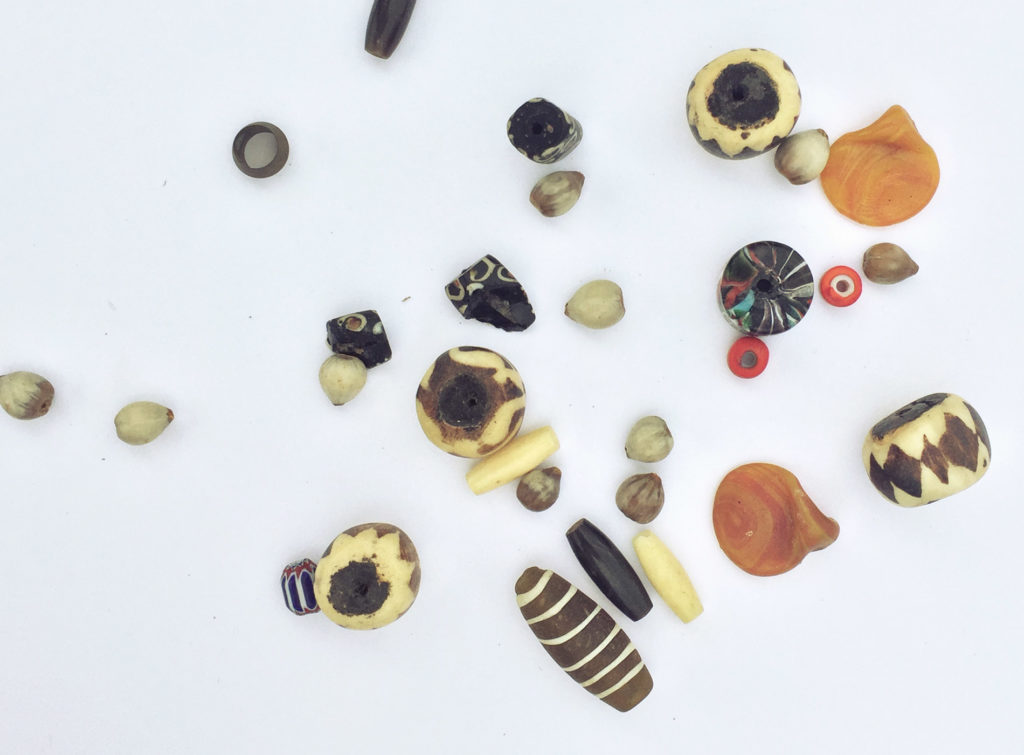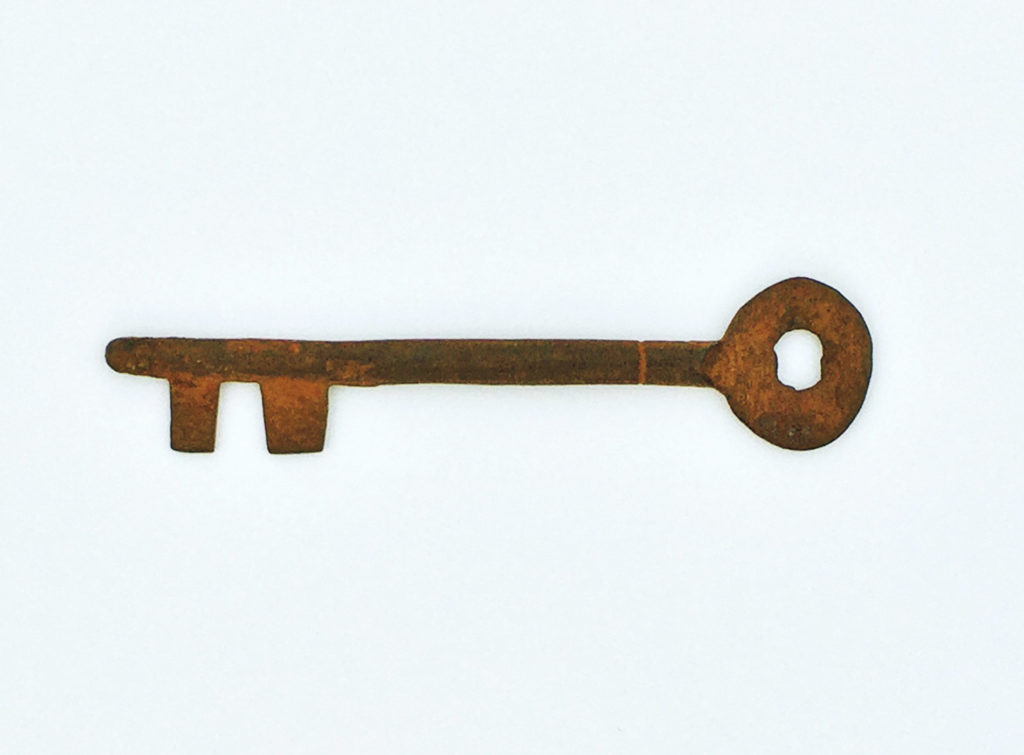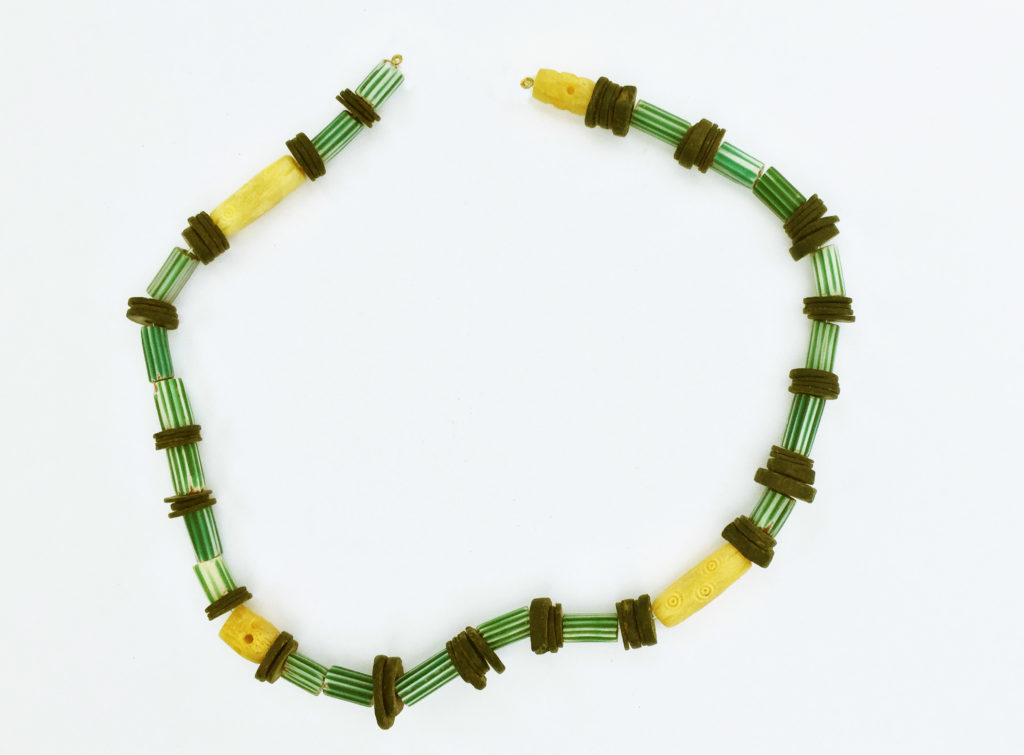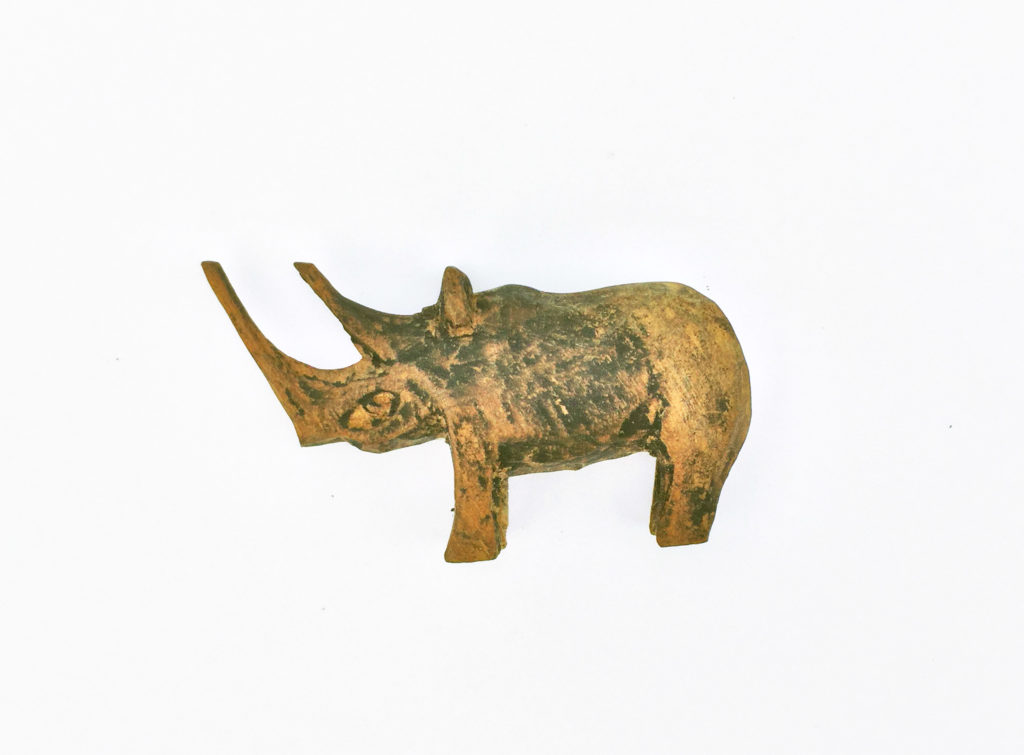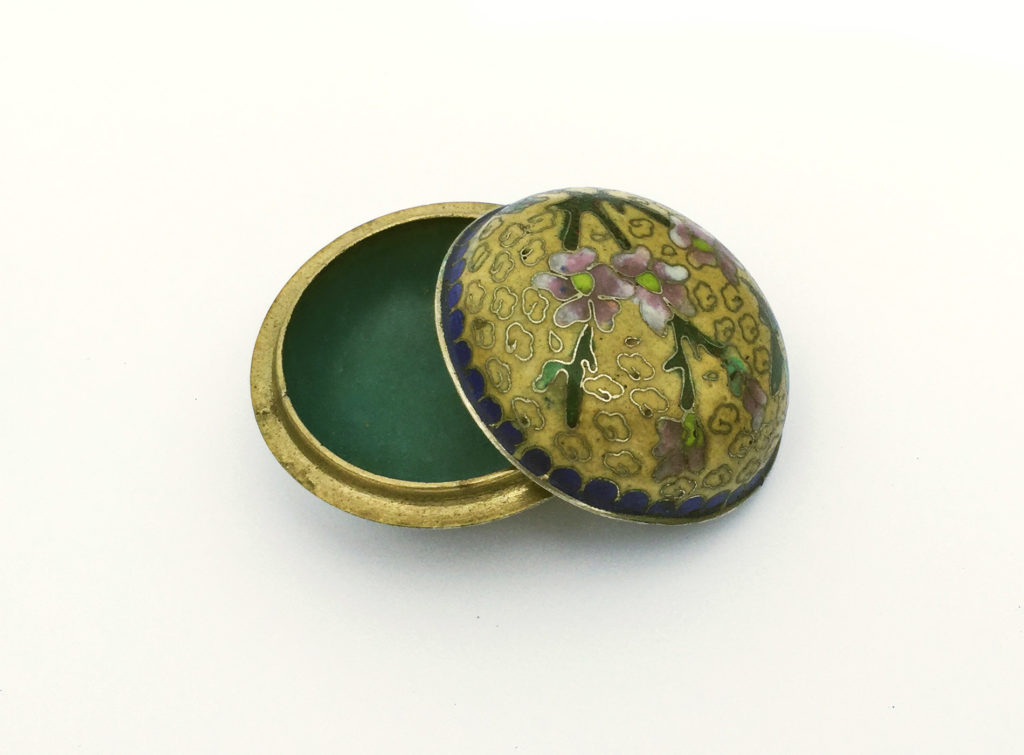The loose beads seen here were part of the belongings of Captain Antonio DaCosta, the captain and sailor. It is a collection of glass trade beads, bone beads, and other beads of various sizes.
Trade beads began to appear around the 15th century, when Portuguese traders arrived on the coast of West Africa, looking to exploit its including gold, slaves, ivory, palm oil, and other resources. The glass beads, a major part of the currency exchanged for people and products, proved to be a cheap form of currency for Europeans. They were made in places like Venice, Bohemia and the Netherlands. The beads were popular as glassmaking was uncommon in Africa, making them unusual and precious. They were particularly valued and sought after in West Africa. Trade beads were not of a set form but were produced according to demand, which could vary from region to region, village to village, resulting in many thousands of different designs.
It is thought that these remaining beads were part of a much larger set, likely strung on a number of necklaces and stored as money by DaCosta.
